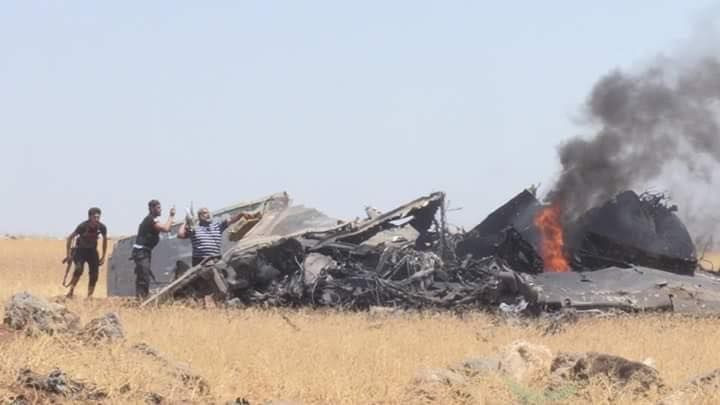Syrian Rebel Gains In Daraa Put Opposition And Regime In A Tug-Of-War For Syria's Druze Population

Hours after al Qaeda’s branch in Syria executed dozens of Druze civilians on Thursday, a man’s voice amplified by a loudspeaker tore through the Syrian Druze heartland of al-Sweida urging the locals to arm themselves against further attacks and join the Syrian army. The Druze were being called to defend regime-held areas in the south, where a coalition of rebel brigades had made major gains and was advancing on a vital regime air base.
Fighting in the southern Syrian governorates of Sweida and Daraa is heating up after weeks of battle concentrated in the north where the Islamic State group and Jabhat al-Nusra have a dominant presence. The uptick in clashes on the border of Sweida threatens to introduce a new player into the already complicated landscape of allegiances in the Syrian civil war. Both the rebels and the regime are vying for the loyalty of the Druze, a minority that has long refrained from siding with either faction and from leaving their territory to fight.
“Some [Druze] support the regime,” said Abu Sharia, a citizen journalist in Daraa. “But so far we have not seen full support [for either side].”
Sweida is a Druze-majority governorate in the middle of two of the most opposition-heavy areas in Syria: Daraa and the Damascus countryside. Though its neighbors are frequently the site of the heaviest regime airstrikes and clashes between rebels and the army, Sweida has remained largely immune to the conflict.
“There is direct contact I cannot talk about it among the elders of the Druze community and the Southern Front to neutralize the province of Sweida of the conflict,” said Hamza al-Hariri, a spokesman for the Aamod Horan Brigade, an opposition group in Daraa linked to the Free Syrian Army.
But over the last 48 hours rebels in the south have made gains in Daraa and reached Sweida’s doorstop, prompting a top Druze spiritual authority to urge the men in Sweida to enlist in the Syrian army to fight the opposition. “We direct a national and religious message to all the honorable young men who are able to carry weapons ... to head to the recruitment centers,” Hikmat al-Hij wrote in a statement circulated online.
The Aamod Horan Brigade, for the first time, reportedly fired an anti-aircraft weapon on a low-flying regime aircraft in Daraa on Thursday. The video showed a Sukhoi Su-24 plane, one of President Bashar Assad’s most capable bombers, descending from the air in a fiery spiral.
“The plane was hit. It was trying to go on a raid of the population and was hit by fire from an anti-aircraft missile,” al-Hariri said.
He claimed rebels used a Russian-designed 14.5-millimeter antitank rifle to take down Assad’s warplane. The group posted a video of the operation on their social media accounts, but it did not show the weapon used to down the plane. This brigade was previously vetted by the U.S. and had received weapons, including TOW missiles, which are still in use, according to al-Hariri.
The Aamod Horan Brigade is a member of the Southern Front, a coalition of rebel groups that operate under the Free Syrian Army banner. The SF launched a major attack on the Thalah air base on the border between Daraa and Sweida early Thursday morning where they engaged in heavy clashes with the army. Initial reports claimed that rebels had seized the air base, but photos and videos of army forces clashing with the opposition inside the town circulated on pro-regime social media accounts later on Thursday.
#SAA & local #NDF from inside #Thala Village today afternoon pic.twitter.com/79KmQZIJ3t
— ibrahim Joudeh (@Ibra_Joudeh) June 11, 2015Yarob Zahreddine in Tha'lah village near Tha'lah Airbase today pic.twitter.com/W4J9SQ6THo
— watanisy (@watanisy) June 11, 2015Thalah is the second-largest regime air base in the country and the launching pad for most air attacks on civilian areas in Daraa and the Damascus countryside. The airport is the key to “liberating” Daraa, al-Hariri said, but “Sweida is not a target and will not be the target.”
“There's love between Daraa and al-Sweida,” al-Hariri said. “And Sweida embraces sons of Daraa, displaced people whose homes were burned.”
The immunity Druze in Sweida have is not mirrored in the rest of the country. On Wednesday, Jabhat al-Nusra targeted Druze civilians in the Idlib province, executing at least 20 civilians. Unconfirmed reports from activists on the ground claim the number of victims is closer to 50.
Jabhat al-Nusra is part of Jaish al-Fatah (the Army of Conquest) in Idlib, a joint rebel operations room that was able to seize Idlib from pro-regime forces earlier that month. The execution worried some Druze leaders in Sweida that rebels in Daraa making gains on the regime would adopt the same policy if they ever reached their heartland.
“We will not accept to sell Druze blood!” Wiam Wahhab, a Lebanese Druze politician said in a televised speech Thursday. “[The Druze in Syria] are ready to defeat the terrorists, but what they lack is arms. Lebanon’s Druze are ready to help. We are ready to form an army of 200,000 fighters to defend the Druze.”
Sources close to the pro-regime fighters said Druze in Sweida had taken up arms and formed small, local militias that were currently “defending” the air base from rebels who had come onto their land.
Though they are fighting in Sweida, the Druze are a people tied to their land and many observers are skeptical that they would enlist in the army to fight the opposition across the country, or even next door in Daraa, where the Southern Front rebels said they are willing to help them defend their territory.
“We do not object to an alliance with them against the regime or even to later protect Sweida from Daesh,” Al-Hariri said using the Arabic acronym for ISIS. “We welcome all who wish to join us to overthrow this regime.”
© Copyright IBTimes 2024. All rights reserved.






















